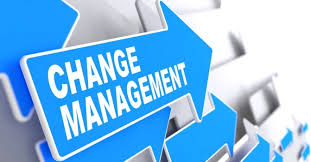
Change requires good management — the most important part of this management is controlling the effect this has on the people in your business. Too many managers think that change is just a matter of telling people they have a “new way” to follow in the business and showing them the details then letting them get on with it.
These managers have failed to realize how stressful it is to give up the familiar and adapt to what is new. Change happens in stages – the effects of the disruption must be managed and sufficient time and support given to help people adjust at each stage or the business will suffer.
This is a brief description of some of the outcomes of change and how they can affect the people in your organization.
The Losses are Felt
Some change events that can cause a great deal of upset are: a) when a company is taken over, b) when a major restructuring/downsizing occurs, c) when one business merges with another. In each case employees will experience a sense of loss. Some of the losses can include:
• Job security
• Workplace culture
• Personal relationships
• A sense of personal worth
• Job status
• Status in the hierarchy
It is natural that change causes people to feel these losses. It is also natural for team members to perform at less than their optimum when feeling so disoriented.
The task for management is to provide support and a means of recovery so that the people and the business can work things through and become totally functional once more.
Before the Change
The situation can actually be worse before a change than after it. When change is on the horizon it is undefined and its effects are not yet known or understood. It is simply a dangerous threat that causes fear and anger.
Fear is often manifested in the emotion of denial. This can reveal itself in many ways including people becoming apathetic or indifferent. They “go through the motions” but don’t really take part in the change process.
Anger can lead to resistance — people fight back against the change and withdraw from participation in the social and community aspects of the business. Self-pity is another manifestation of resistance.
After the Change
Once the change arrives those who are affected by it usually begin to start working with it and seek out new opportunities for themselves.
Some go overboard and try to quickly incorporate everything new while dumping everything that was a part of their past structure. They can’t concentrate on their duties and keep coming up with new ideas that in turn cause frustration when they’re not adopted.
Others who have made a genuine commitment to the change become leaders or “champions” of it and show a determination to make it work for them and for the business. They become involved in team activities and work out a clear focus on where they’re going and what part they’ll play.
The Four Stages are a Part of Change
Before the change you can expect fear/denial and anger/resistance. After the change you will see incorporation/frustration and commitment/determination. Most people in an organization go through all four stages during major change events, but at their own rate of transition. The first three stages especially need to be handled correctly so that they are transited as quickly as possible and things can move into the more positive fourth stage. Once they reach the stage of commitment/determination, continue supporting them until they are fully involved in their new environment.
Copyright 2004, RAN ONE Inc. All rights reserved. Reprinted with permission from www.ranone.com.

 Chris’ combination of academic credentials, career experience and temperament ideally suit his calling as a business development advisor. Clients say he has a mind for business and a heart for service.
Chris’ combination of academic credentials, career experience and temperament ideally suit his calling as a business development advisor. Clients say he has a mind for business and a heart for service.